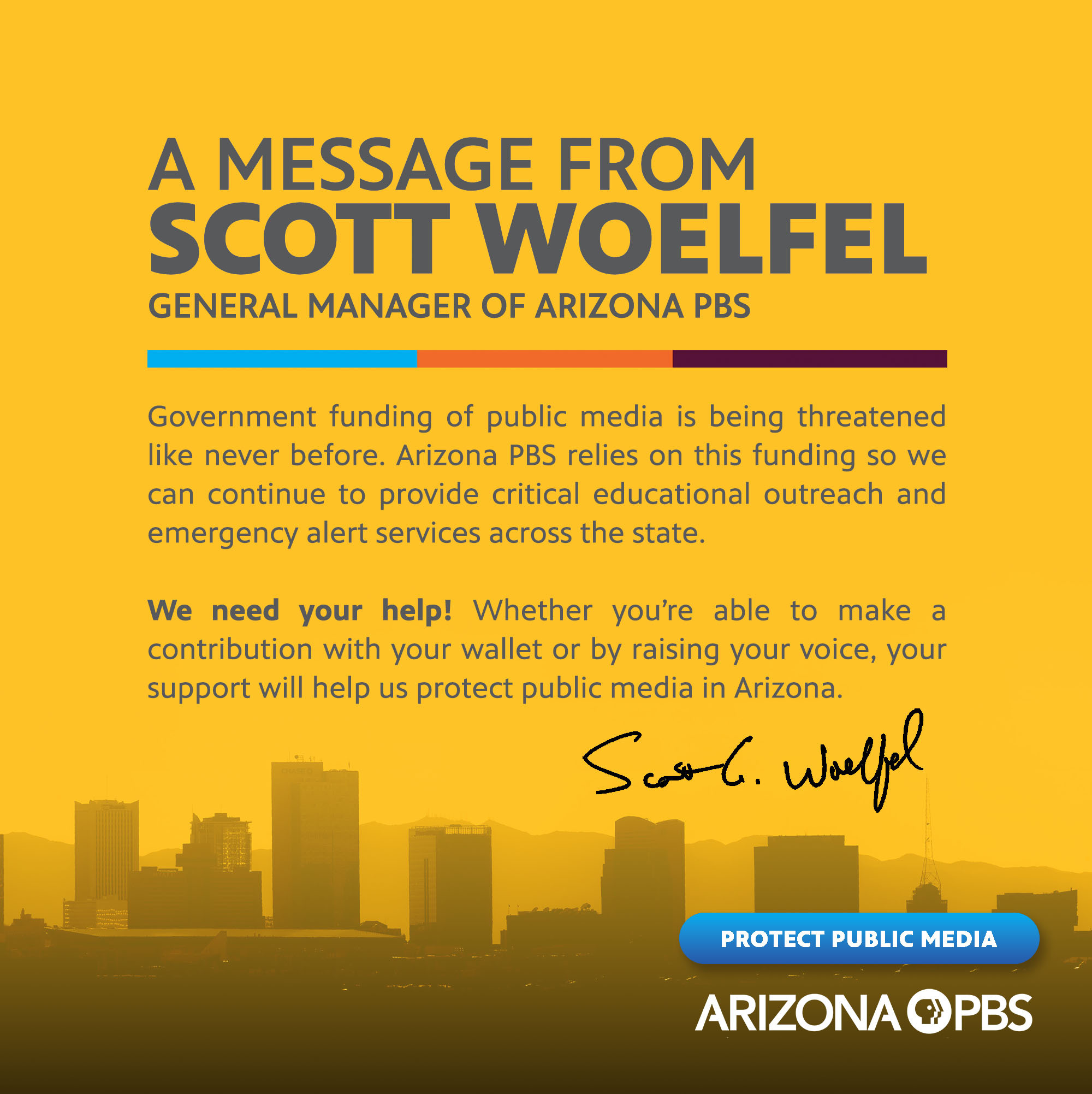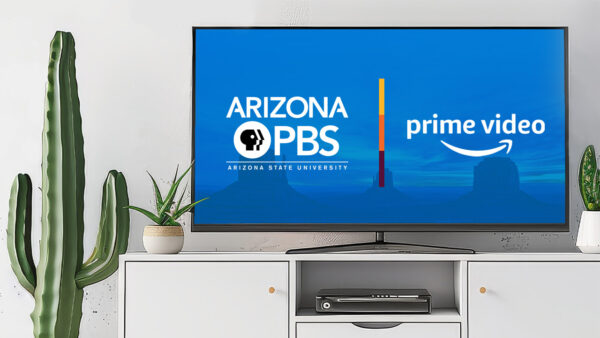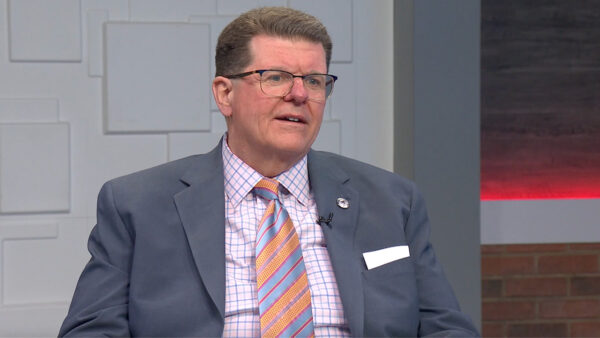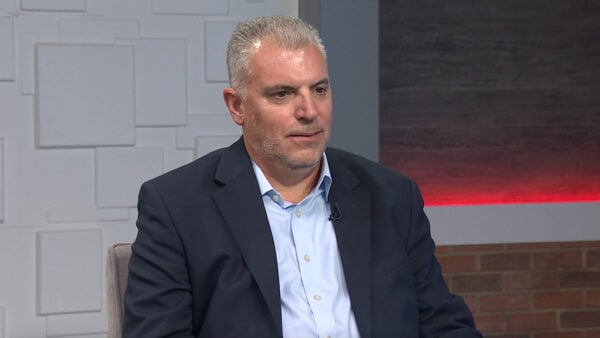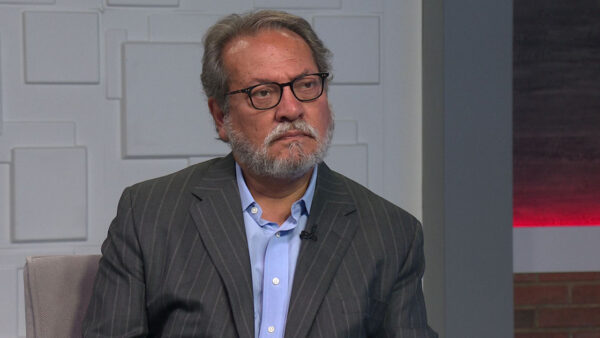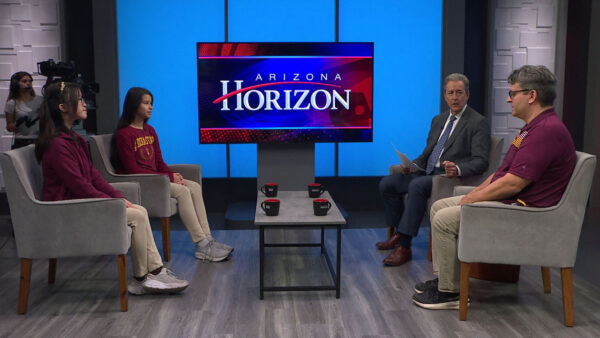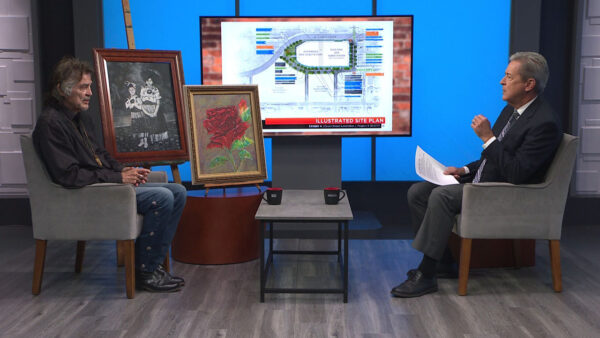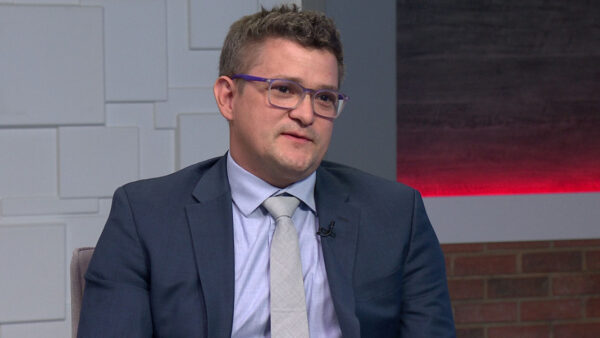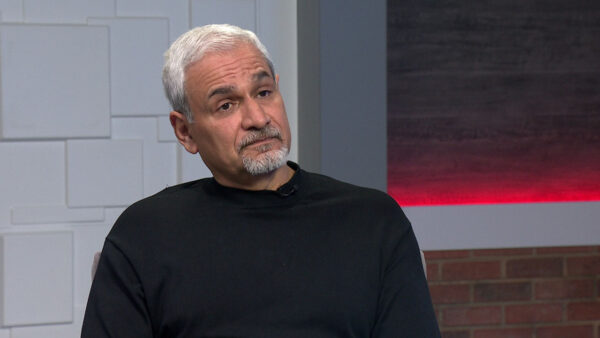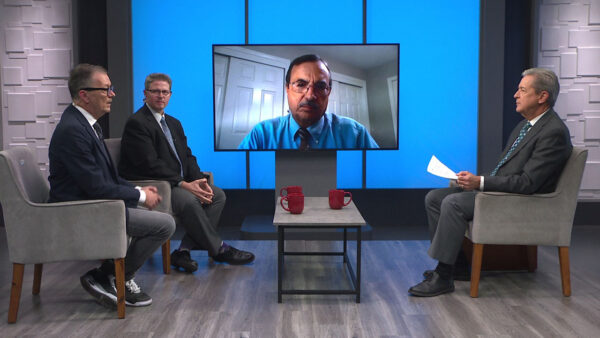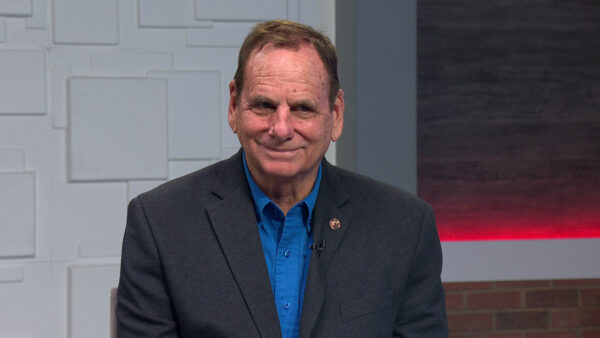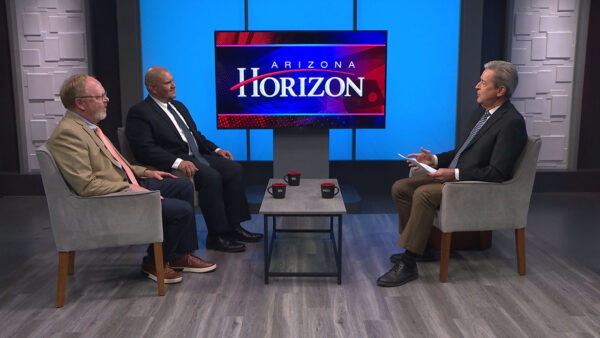We’ll take a look at how Starbucks is helping students pay for college. Following that, hear from Melissa Pizzo, the executive director for Arizona State University financial aid and scholarship services, and Felicia Ganther, associate vice chancellor for student affairs from the Maricopa County Community College District, who will tell us more about how students are paying for college.
Ted Simons: Coming up next on "Arizona Horizon," we'll have the latest on today's U.S. Supreme Court hearing on the president's immigration deportation plan. And we'll meet the author of a new book the life of an African American entrepreneur during reconstruction. Those stories next on "Arizona Horizon."
Video: "Arizona Horizon" is made possible by contributions from the Friends of Arizona PBS, members of your PBS station. Thank you.
Ted Simons: Good evening and welcome to "Arizona Horizon," I'm Ted Simons. The U.S. Supreme Court today held oral arguments on President Obama's executive action that extends a temporary deportation delay to up to 4 million undocumented immigrants. The court looked at two issues. First, do states have legal standing to sue over how the government administers immigration policy, and whether or not the president's policy in this case is constitutional? As to legal standing, Texas claims that deferred deportations to undocumented immigrants would cause economic harm to the state. But Justice Sonia Sotomayor said quote, "those nearly 11 million unauthorized aliens are here in the shadows. They are affecting the economy whether we want to or not. The answer is if Congress really wanted to have an economic impact, it would allot the amount of money necessary to deport them, but it hasn't." Regarding the constitutionality of the president's executive action, Justice Anthony Kennedy appeared to be critical of the president's policy. Kennedy said quote, "it's as if the president is setting the policy and the Congress is executing it. That's just upside down." And as to granting the immigrants lawful presence in the U.S., Justice Samuel Alito said quote, "How is it possible to lawfully work in the United States without lawfully being in the United States? I'm just talking about the English language. I don't understand it." Outside the Supreme Court today, Arizona congressman Raul Grijalva talked about why he supports the president's policy.
Raul Grijalva: If they qualify, receive an order of stay like the DREAMers did and as such would be in a position then to be protected but more importantly be productive and not feel the fear, the sting of deportation or family separation. It would be huge in Arizona.
Ted Simons: The court is expected to act before the end of June. A 4-4 tie would keep the injunction against the program in place. And today's the deadline to register to vote in the May 17th special election on Prop 123, which uses state land-trust money to pay for a major portion of inflation-adjusted education funding. Voters will also decide on Proposition 124, which changes the pension system for public safety employees. Voters have until May 6th to request an early ballot and this election is open to all registered voters, including Independents. Tonight's look at Arizona education focuses on college debt. It's a growing problem for many and at least one presidential candidate has made it a cornerstone of his campaign. The latest government data shows on average a college student will graduate $31,000 in debt, that's up 10% from 2014. While many companies offer partial tuition reimbursement, Starbucks has teamed with ASU to create a plan that results in no out-of-pocket tuition cost. Producer Shana Fischer and photographer Langston Fields explain how the Starbucks college achievement plan is helping baristas earn bachelor degrees.
Kiana Hall: I have your Grande cappuccino.
Shana Fischer: One cup at a time, Kiana Hall is getting closer to her dream.
Kiana Hall: I'm able to get my schooling done again. I will be the first to graduate from college, which is what keeps me motivated.
Shana Fischer: Kiana is one of 3,900 Starbucks employees taking part in the college achievement plan. Started in 2014, the plan is a partnership between the coffee giant and ASU. It covers the cost of tuition for any of the 50 online undergraduate degrees.
Phillip Regier: At the end of the day, 50% of the students who begin university education in the U.S. don't complete.
Shana Fischer: Phillip Regier is ASU's dean for education initiative. He says the college achievement plan closes a growing gap in America's college system.
Phillip Regier: A lot of those students have every ability to complete, but life happens. Something gets in the way. They get crosswise with financial aid. A parent dies, they have a child. And a lot of what we try to do in the Starbucks College Achievement Plan is reach out to those students who may have started other places, who are now working at Starbucks, and allow them to complete a university degree.
Shana Fischer: As with much of Starbucks employee benefits, the idea is rooted in CEO Howard Schultz's childhood.
Howard Schultz: When I look at these kids, it's very personal for me. I grew up in Brooklyn in federally subsidized housing, my dad never made more than $20,000 a year and I saw first-hand the fracturing of the American dream. And so I want to try to pay it forward. I want to make a difference and try to use the platform of Starbucks and the scale of Starbucks to make a positive difference.
Shana Fischer: Schultz says he found a like-minded partner in ASU president Michael Crow and together they worked out a plan to offer the 300,000 Starbucks partners worldwide an opportunity at a college education.
Howard Schultz: We also found out in our own company that 70% of our own employees had been to school and didn't finish, did not have college tuition and the primary reason was college debt. So how could we overcome that?
Shana Fischer: Starbucks partner Natalia Bedranska just graduated with a degree in health sciences.
Natalia Bedranska: With my degree, I hope to open my own business one day and work in the corporate world to teach people how to be healthy.
Shana Fischer: She left the University of Arizona after one year to come to ASU. She was shattered when he found out her scholarships wouldn't transfer. Unable to afford the tens of thousands she would need to graduate, she learned about the plan and signed up right away.
Natalia Bedranska: It would be silly not to take advantage of it, and I think that everybody should, you know, strive for what they want and by taking the college achievement plan into consideration, they can do that.
Shana Fischer: For Nataliya, graduating is a tremendous accomplishment. She moved to the United States from Poland when she was eight years old. She had always dreamed of going to college and knew money would be tight.
Natalia Bedranska: The day that I graduated, my parents were extremely excited for me. My whole family was. They actually came to visit and we threw a big party and it was really exciting to see everybody happy for me and being able to see a better future for myself.
Shana Fischer: The end game for the ASU Starbucks program is not just about the tuition help.
Phillip Regier: So by allowing Starbucks partners to receive degrees from ASU, what we're allowing those students to do is ultimately have higher lifetime incomes, they'll be able to change jobs and move into positions that will allow them to progress throughout their career. They're going to live longer, they're going to be happier, they're going to be able to commit more to their communities, they're going to be able to make better public policy decisions than students who only have high school diplomas.
Shana Fischer: Creating the college achievement plan has taken a lot of effort and money. Neither ASU nor Starbucks would reveal just how much but a lot of the startup cost is infrastructure, creating technology that allows Starbucks and ASU to work together and provide a seamless experience for students. The process begins with a Starbucks partner goes to the website to sign up for the plan. A trained ASU counselor works with the partner to help determine if they qualify for federal financial aid and ASU scholarships. Whatever is not covered is paid for by Starbucks. The money only covers tuition. The student has to pay for books, housing and other college necessities and there are requirements to get the money. You must be a full-time student and work at least 20 hours a week at Starbucks. On average, a student can save thousands a year.
Phillip Regier: These students have a huge incentive to complete. Where else are you going to be able to essentially receive a university education without having to pay any tuition? And so that incentive really allows a student to focus more both on their work because they understand the importance of their work and their schoolwork, and I think they're very appreciative of the opportunity and what we've seen is that the Starbucks students do slightly better and retain at a higher rate than students we recruit on the open market, if you will.
Shana Fischer: Critics argue the Starbucks program is limiting, forcing students to attend just one college, and they're quick to point out students who need income assistance often do better with in person classes than online. They admit there are challenges because it is an online program, they had to be self-starters when it came to getting schoolwork done but both agree it didn't take long for them to buckle down and Kiana gained the added benefit of being a role model.
Kiana Hall: Actually, my sister started school again shortly after I started so that kind of made me happy like she's getting her foot in the door, too, and starting to do it after I did it.
Shana Fischer: For Schultz, stories like that only reinforce that he's doing the right thing by his employees.
Howard Schultz: A week does not go by where I have not run into a Starbucks person, got a letter, received a letter from a parent with a very emotional expression of gratitude about what this benefit has meant to them.
Kiana Hall: It's going to be one of those things where I just let out that breath that I'm done, and it's going to be -- it's going to be a really good day when that happens. I'm going to be really excited. Thank you, have a good day.
Ted Simons: He hopes the ASU Starbucks plan can serve as a model to other large corporations looking to help shrink the tuition debt issue. By 2025, Starbucks hopes 25,000 of its partners will graduate with degrees from ASU. Joining us now to talk about the variety of ways to finance higher education is Melissa Pizzo, the executive director for ASU's financial aid services, and Felicia Ganther, associate vice chancellor for students affairs from the Maricopa county community college district. Good to have you both here. Thanks for joining us.
Melissa Pizzo: Thank you.
Ted Simons: Increasingly tough to pay for college right now. Talk to us about the variety of ways out there to help, folks.
Melissa Pizzo: Sure. What you heard in the video is obviously one example and that's a very formalized program. There are local employers that are here in the valley and throughout the state that may have similar opportunities for students and we always encourage students, work with your families and understand what the employer may offer. We, of course, want to make sure students and families know first and foremost fill out the free application for federal student aid, that's going to help the student become available for federal financial aid and then colleges and schools throughout the country, obviously, us here locally we use that information as well to determine what additional financial aid they may be able to receive from the institution. There are also some other components from that information that's provided that we can determine are there other resources available to them that can be used to help pay for college.
Ted Simons: As far as we know how do most students pay for college?
Felicia Ganther: Well, I think that most students utilize some form of financial aid through federal funding or through student loans, as well. There are a lot of students whose parents are themselves employed by corporations, organizations that provide funding for them to attend college. And then there are just some folks who come right out of the pocket and pay for it if they can't afford it.
Ted Simons: If they need financial aid, where can they get the information and where can they find it?
Felicia Ganther: I would always recommend they start with FAFSA.edu.gov. You need to determine whether or not you qualify based upon your family's earned income, whether you qualify for federal funding, that's important. It's also the gateway to other scholarships that may be available to them, which could include both private and public organizations and so students should start there.
Ted Simons: It's interesting. Grants and scholarships? I mean, we're talking about student debt. Student debt with grants and scholarships?
Melissa Pizzo: A grant and a scholarship is what we refer to as gift aid. A student does not need to pay that back, those are great sources that can be used to offset the cost.
Ted Simons: Work study, those kinds of things, those do have to be repaid.
Melissa Pizzo: Work study, working on campus, you don't have to have federal work study in order to be employed on campus. For example, ASU employs more than 12,000 students on any of our campus locations at any given point in time but to use an example if a student were working and getting paid minimum wage, $8.05 an hour, we recommend 20 hours per week, nothing more than that right? And if a student is working over the course of an academic year, that can be about $4,800. So that can help really contribute to the cost of college.
Ted Simons: And we're talking about tuition a lot but that's not the only cost of going to college. You've got housing, you've got food, you've got books, you have life.
Felicia Ganther: Exactly. What we recommend is after students take a look what is it going to take for them to attend part time or full-time? There are going to be fees and costs that are going to be associated with attending. If a student is interested in a very specific type of occupations, there may be additional things that they would need to purchase in order to be successful in those types of courses. But we also encourage a student to think about how could their family help them out? What are some of the things that their families could assist them with? Or what could the employers assist them with? And sometimes, the cost is time. They need time to go to class. They need time to be able to study.
Ted Simons: As far as low-income students, community colleges, lots of low-income students go there, start there and move on. The nontuition costs, just the general cost. Talk about the challenges there.
Felicia Ganther: I think the challenges for those who come from underserved environments is that you have to balance going to school with other necessities. You have life, you have transportation costs, you have childcare costs, those types of things. And so it's important to take a look at that before you jump head in, because you don't want to get mid-semester through and not have any plans in place that will support you while you're going through college. So it's definitely important. But the one thing that I think about in underserved environments, students that come from underserved environments is that if they qualify for federal financial aid, they will take into account those costs of living and so the student will receive some type of stipend that would assist them with those.
Ted Simons: For those students who do take out loans, who do wind up having debt, everything you read in the headlines, student debt is a major problem out there. Is that what you're seeing?
Melissa Pizzo: Not necessarily. Loans can be a resource that can be used to help pay for college. There are obviously the national averages, we encourage students and families to understand what is the borrowing rate of the college or university that you're looking at and if you were to look at Arizona State University and our graduates, upon graduation what is that average indebtedness? It's closer to $14,000. So those national averages again are taking a lot of people into consideration, they're taking into consideration -- you need to be aware is that for students receiving their first degree, their bachelor's degrees or master's or graduate work also included in those figures?
Ted Simons: With that in mind, your advice to students, to parents on the cost of college. What do you tell them?
Melissa Pizzo: Make an inform decision and the best way to do that is to look at all of the schools you're looking at attending and submit the FAFSA, put your hat in the ring to be considered for financial aid, and once you've received that financial aid award and notification from the school that you're looking at, then make your decision about the best academic and financial fit. So make sure you have all the information in front of you, make sure you have the ability to compare those costs against institutions that you're looking at so you know what is going to be covered by financial aid and what is the expectation of the family and the student and what needs to be paid out of pocket.
Ted Simons: Beyond FAFSA, again advice to students, advice to parents? Again, for some of the underserved kids this is the first time anyone in the family has gone to colleges. What do you tell them?
Felicia Ganther: First thing I will say is go to your counselors at your schools. They have information that will help you to be successful in your transition to college. The second thing is there are scholarships, there are community foundations, Arizona community foundation has a scholarship website, all of the universities and colleges in the state have websites as well that the students can go to and identify scholarships that they qualify for. But they're going to have to put in a little work. They're going to have to write an essay and provide some information to those funders.
Ted Simons: That's a good start. Good to have you both here. Thanks for joining us. We appreciate it.
Video: Get the inside scoop on what's happening at Arizona PBS. Become an insider. You'll receive weekly updates on the most anticipated upcoming programs and events. Get the insider delivered to your e-mail inbox. Visit azpbs.org to sign up today.
Melissa Pizzo: Executive Director for Arizona State University's Financial Aid and Scholarship Services, Felicia Ganther: Associate Vice Chancellor for Students Affairs from the Maricopa County Community College District
